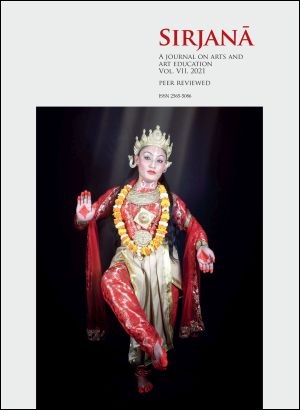Developing Trends of Music in the Vedic and Mythological Eras
DOI:
https://doi.org/10.3126/sirjana.v7i1.39352Keywords:
Stuti-gāna, gāthā-gāna, Gram-murchhana, Sabda-Brhama-Naada, Om, SāmagatiAbstract
The Vedas are religious texts which inform the religion of Hinduism also known as Sanatan Dharma; meaning eternal order or eternal Path. The Vedic – mythological period is considered to be the golden era in the history of world literature. Not only did the philosophy of the age reach a new pinnacle; but even aspects of music, art, culture, literature, sculpture, religion, and spiritualism were extended to their highest point. Amongst these cultural instruments, Music represents vocal and instrumental sounds combined in such a way as to produce beauty of form, harmony and expression of emotions. During this era music – vocal and instrumental were held in high respect in society. Music had both ritual and secular aspects. Sāmaveda is considered as the root of Vedic music as well as the root of today's south Asian classical music. Sāmagāna was considered as the sound of inspiration for the people of that age. This paper attempts to discuss the musical situations in Vedic and Mythological periods regarding its origin, development, extension and practices in ancient south-eastern i.e. Hindu civilization. The paper also points out why the need and importance of Vedic music in present day society is much more; especially in regards to the adoption of lessons and ethics from Sanatan Hinduism.




